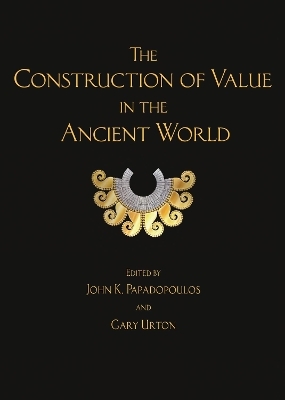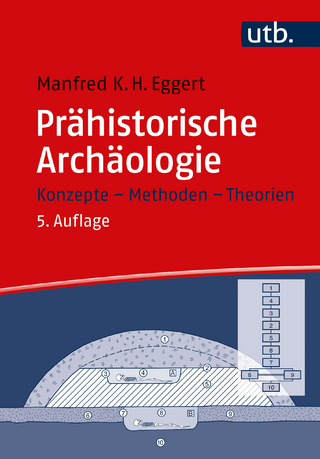
The Construction of Value in the Ancient World
Cotsen Institute of Archaeology at UCLA (Verlag)
978-1-931745-90-1 (ISBN)
Recipient of the Jo Anne Stolaroff Cotsen Prize Scholars from Aristotle to Marx and beyond have been fascinated by the question of what constitutes value. The Construction of Value in the Ancient World makes a significant contribution to this ongoing inquiry, bringing together in one comprehensive volume the perspectives of leading anthropologists, archaeologists, historians, linguists, philologists, and sociologists on how value was created, defined, and expressed in a number of ancient societies around the world. Based on the basic premise that value is a social construct defined by the cultural context in which it is situated, the volume explores four overarching but closely interrelated themes: place value, body value, object value, and number value. The questions raised and addressed are of central importance to archaeologists studying ancient civilizations: How can we understand the value that might have been accorded to materials, objects, people, places, and patterns of action by those who produced or used the things that compose the human material record? Taken as a whole, the contributions to this volume demonstrate how the concept of value lies at the intersection of individual and collective tastes, desires, sentiments, and attitudes that inform the ways people select, or give priority to, one thing over another.
John K. Papadopoulos is professor of classics and archaeology at the University of California, Los Angeles. Gary Urton is the Dumbarton Oaks Professor of Pre-Columbian Studies in the archaeology program of the department of anthropology at Harvard University.
Table of Contents Part I: Place Value Ch. 1: Significant stones, significant places: monumentality and landscapes in Neolithic western Europe by Chris Scarre Ch. 2: The negotiation of place value in the landscape by John Chapman Ch. 3: Spare values: the decision not to destroy by Susan E. Alcock Ch. 4: Emplacing value, cultivating order: places of conversion and practices of subordination throughout early Inka state formation (Cusco, Peru) by Steve Kosiba Ch. 5: The revaluation of landscapes in the Inca Empire as Peircean replication by Charles Stanish Part II: Body Value Ch. 6: Objectifying the body: the increased value of the ancient Egyptian mummy during the socioeconomic crisis of Dynasty 21 by Kathlyn M. Cooney Ch. 7: From value to meaning, from things to persons: the grave circles of Mycenae reconsidered by Sofia Voutsaki Ch. 8: Dressing the body in splendor: expression of value by the Moche of ancient Peru by Christopher B. Donnan Ch. 9: Interpreting the Paracas body and its value in ancient Peru by Lisa DeLeonardis Ch. 10: The value of chorality in ancient Greece by Leslie Kurke Ch. 11: Bodies and their values in the early Medieval West by Patrick J. Geary Part III: Object Value Ch. 12: Systems of value among material things: the nexus of fungibility and measure by Colin Renfrew Ch. 13: Money, art, and the construction of value in the ancient Mediterranean by John K. Papadopoulos Ch. 14: The construction of values during the Peruvian Formative by Richard L. Burger Ch. 15: Bronze, jade, gold, and ivory: valuable objects in ancient Sichuan by Rowan Flad Ch. 16: The value of aesthetic value by James I. Porter Ch. 17: Light and the precious object, or value in the eyes of the Byzantines by Ioli Kalavrezou Ch. 18: Figurine fashions in formative Mesoamerica by Richard G. Lesure Ch. 19: From rational to relational: re-configuring value in the Inca Empire by Tamara L. Bray Ch. 20: Competing and commensurate values in colonial conditions: how they are expressed and registered in the sixteenth-century Andes by Tom Cummins Part IV: Number Value Ch. 21: Equivalency values and the command economy of the Ur III period in Mesopotamia by Robert K. Englund Ch. 22: Constructing value with instruments versus constructing equivalence with mathematics: measuring grains according to early Chinese mathematical sources by Karine Chemla Ch. 23: Recording values in the Inka Empire by Gary Urton Ch. 24: The varieties of ancient Maya numeration and value by David Stuart Ch. 25: Calculative objects: sustaining symbolic systems in the ancient Mediterranean by Melissa A. Bailey
| Reihe/Serie | Cotsen Advanced Seminars |
|---|---|
| Verlagsort | Los Angeles |
| Sprache | englisch |
| Maße | 178 x 254 mm |
| Gewicht | 1816 g |
| Themenwelt | Geisteswissenschaften ► Archäologie |
| Geschichte ► Allgemeine Geschichte ► Vor- und Frühgeschichte | |
| Geisteswissenschaften ► Philosophie ► Philosophie Altertum / Antike | |
| Sozialwissenschaften ► Soziologie | |
| ISBN-10 | 1-931745-90-0 / 1931745900 |
| ISBN-13 | 978-1-931745-90-1 / 9781931745901 |
| Zustand | Neuware |
| Haben Sie eine Frage zum Produkt? |
aus dem Bereich


